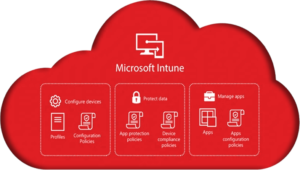Recordings are one of the most important parts of online Teams meetings. We use it to record training for colleagues, save workshops, record and send troubleshooting sessions, test presentations, and for many other scenarios. When a meeting starts you can often hear “can I record a meeting” or “please record the meeting”. If you record a lot or you need to be sure that the recording is saved, you can use a dedicated feature – auto-recording.
Auto-recording is a feature that you can configure for a particular meeting. When enabled, the meeting will be automatically recorded when it starts, and you do not need to remember to manually start it. It must be enabled before the meeting starts, and you can configure it from a meeting options pane.
Configure auto-recording
- Create a meeting in Teams or Outlook and Send it. Now go to the meeting details
- Open Meeting options
- Enable Record automatically
Recordings
When it’s enabled, each time a meeting is started the recording will begin (the first user joins the meeting).
You can find all recordings on the meeting chat or in the Files tab in a meeting details pane.
Recordings created with this feature have the same options as manually started:
- Only people from your organization can stop a running recording
- Transcripts
- Expiration policy
- Storage location
Storage
Meeting recordings are stored in OneDrive for Business or in SharePoint Online sites. This is also valid for auto-recording.
- Regular meetings (scheduled meetings, ad-hoc meetings, group chats with video) – recordings are saved to OneDrive for Business. In this case, if you start a meeting you will get a recording in your OneDrive.
- Channel meetings – recordings are saved to SharePoint Online which is connected to a Team
- When unable to upload to OneDrive/SharePoint – recordings are saved in temporary storage. Files are available to download only for 21 days.
More info about storage and permission is available on a Microsoft page (https://learn.microsoft.com/en-us/microsoftteams/cloud-recording/)
Important
- If you join a meeting as a first attendee or organizer the recording will start
- Auto-recording is active all the time – you can join a day before or a week after the meeting and the recording will start
- If you start the meeting multiple times, auto-recording creates multiple video files
- All recordings are available on a meeting chat and in a Files tab in meeting details in Teams
- Every type of user can trigger auto-recording – if you allow everyone to skip the meeting lobby then even guests and anonymous attendees trigger recording.
- If a guest or an anonymous user triggers the auto-recording, the file will be saved in temporary storage. A recording will be stored for 21 days and you can find it only in the meeting chat.
Summary
Auto-recording is useful when you don’t want to remember recordings. Schedule a meeting with this feature enabled and then you can only check recorded files in the meeting details. I find it extremely useful when I create a meeting for someone or create a large workshop/training.
You have to remember that each meeting starts to generate a new recording file. In some scenarios, you will need to remove test or random recordings from the list.





